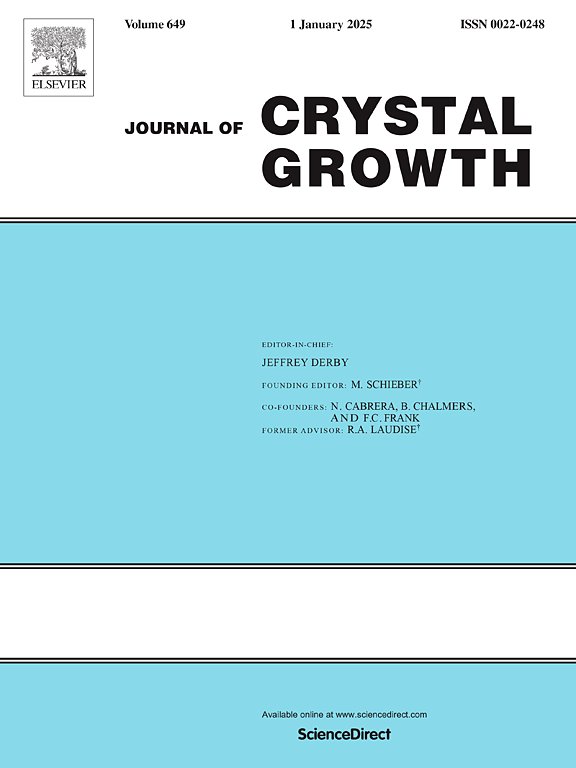通过优化低温浓缩提高橄榄油厂废水中酚类化合物的回收率
IF 2
4区 材料科学
Q3 CRYSTALLOGRAPHY
引用次数: 0
摘要
这项工作旨在开发一种利用低温浓缩处理橄榄油厂废水(OMW)的工艺。实验分两个阶段进行:冷冻阶段,在-16 °C至-24 °C的温度下结冰;发汗阶段,在室温下进行。第二步是通过融化浓缩溶液袋中的不纯区域,对冰进行深度净化。然后收集三到五个溶质浓度递减的液体馏分。物理化学分析表明,随着溶液初始浓度的增加,第一部分的浓缩效率降低,最终冰块的纯度降低。采用响应面法(RSM)进行的参数研究突出显示了初始浓度、冷冻温度和部分融冰过程中使用的液体馏分数量对所获得的第一液体馏分中总酚浓度的影响。初始浓度和部分融化步骤的次数会产生非常显著的影响。不过,在所研究的冷却温度范围内,-16 °C 与 -24 °C 相比,酚类化合物的回收效率略有提高。总之,研究结果证明了该工艺的可行性,它可以回收富含总酚的低温浓缩溶液并生产优质水。本文章由计算机程序翻译,如有差异,请以英文原文为准。
Enhancing phenolic compound recovery from olive oil mill wastewater through optimized cryoconcentration
This work aims to develop a process for treating olive mill wastewater (OMW) using cryoconcentration. The experiments are carried out in two stages: the freezing stage, producing an ice at temperatures between −16 °C and −24 °C, and the sweating stage, conducted at room temperature. This second step consists in purifying in depth the ice by melting the impure zones of concentrated solutions pockets. Three to five liquid fractions with decreasing concentrations of solute were then collected. The physicochemical analysis indicates that as the initial concentration of the solution increases, the concentration efficiency in the first fraction decreases, and the final ice block is less pure. The parametric study, conducted using the Response Surface methodology (RSM), highlighted the effects of initial concentration, freezing temperature and the number of liquid fraction applied during the partial melting of the ice on the concentration of total phenols in the first liquid fraction obtained. The initial concentration and the fractional partial melting step have a very significant impact. However, within the studied range of cooling temperatures, −16 °C results in a slight increase in the recovery efficiency of phenolic compounds compared to −24 °C. Overall, the results demonstrate the feasibility of the process, which enables the recovery of cryoconcentrated solutions rich in total phenols and the production of good-quality water.
求助全文
通过发布文献求助,成功后即可免费获取论文全文。
去求助
来源期刊

Journal of Crystal Growth
化学-晶体学
CiteScore
3.60
自引率
11.10%
发文量
373
审稿时长
65 days
期刊介绍:
The journal offers a common reference and publication source for workers engaged in research on the experimental and theoretical aspects of crystal growth and its applications, e.g. in devices. Experimental and theoretical contributions are published in the following fields: theory of nucleation and growth, molecular kinetics and transport phenomena, crystallization in viscous media such as polymers and glasses; crystal growth of metals, minerals, semiconductors, superconductors, magnetics, inorganic, organic and biological substances in bulk or as thin films; molecular beam epitaxy, chemical vapor deposition, growth of III-V and II-VI and other semiconductors; characterization of single crystals by physical and chemical methods; apparatus, instrumentation and techniques for crystal growth, and purification methods; multilayer heterostructures and their characterisation with an emphasis on crystal growth and epitaxial aspects of electronic materials. A special feature of the journal is the periodic inclusion of proceedings of symposia and conferences on relevant aspects of crystal growth.
 求助内容:
求助内容: 应助结果提醒方式:
应助结果提醒方式:


